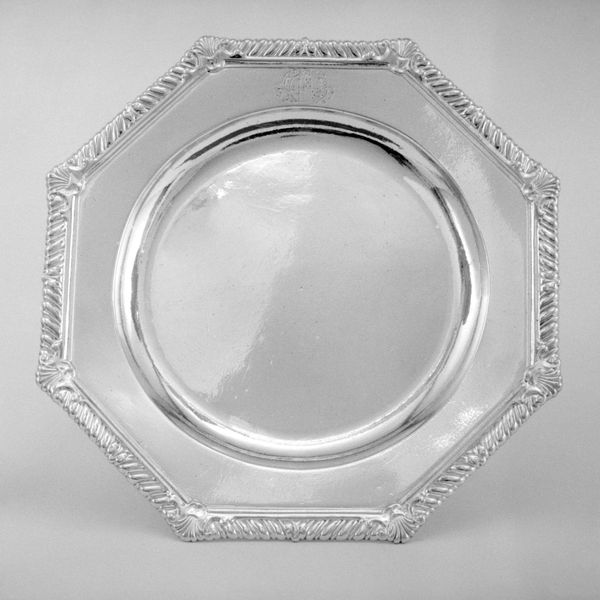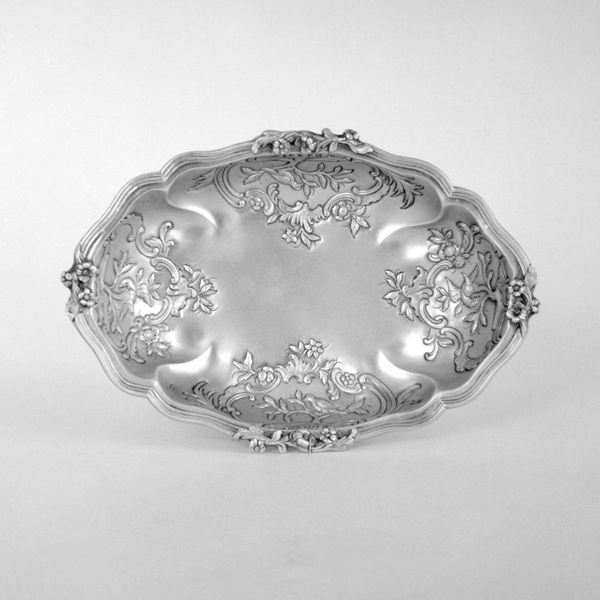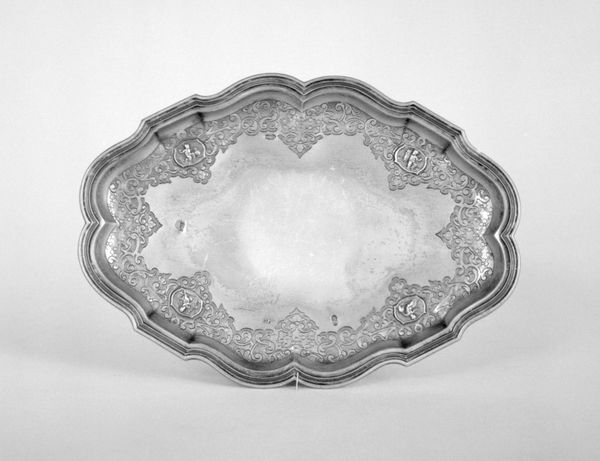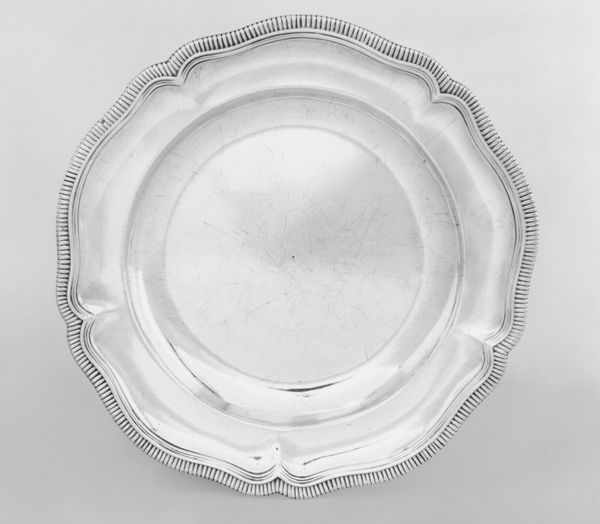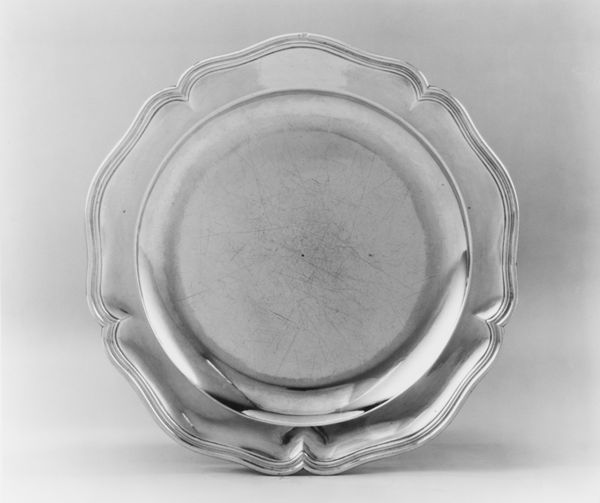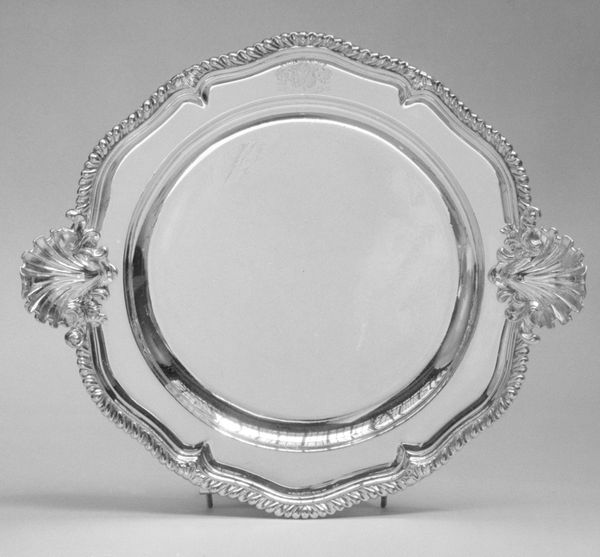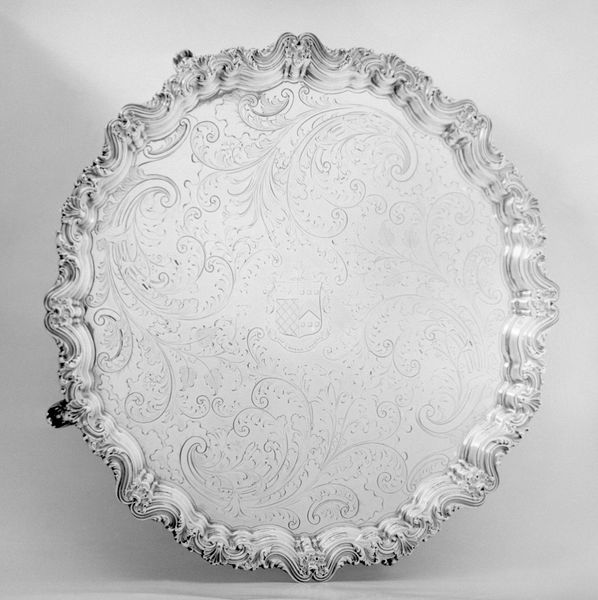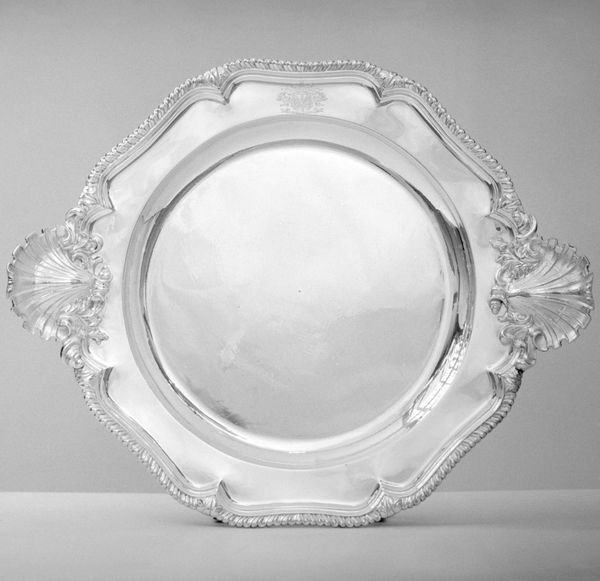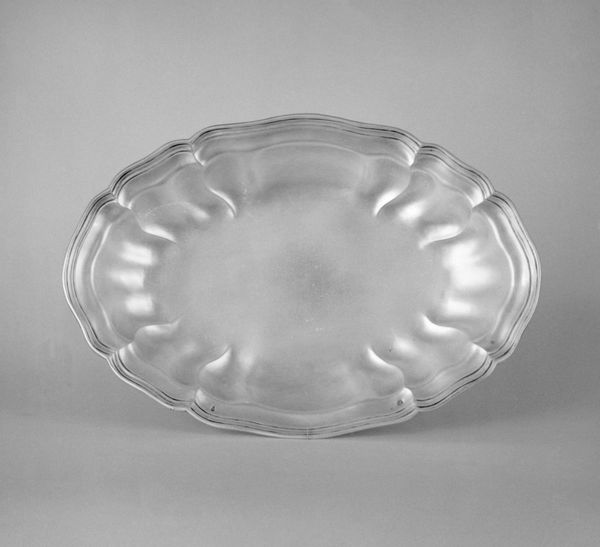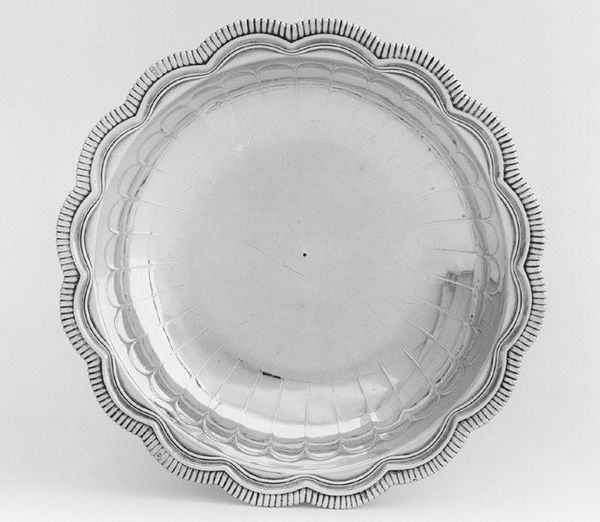
silver, sculpture
#
silver
#
sculpture
#
decorative-art
#
rococo
Dimensions: Diameter: 10 in. (25.4 cm)
Copyright: Public Domain
Curator: Looking at this beautiful silver plate made around 1753-1755 by Gottlieb Satzger, one immediately appreciates the mastery of rococo style. It resides here at the Metropolitan Museum of Art. Editor: Its immediate impression is one of delicate opulence. The scalloped edge, the intricate floral details…it almost seems too precious to hold food. Curator: Yes, its very nature screams display rather than practical use, wouldn't you agree? These kinds of pieces were part of an elaborate performance of wealth and status. Consider how the aristocracy ate and entertained; they weren't just eating, they were showcasing power. Editor: Precisely, but beyond the overt display of wealth, there is also a sense of cultivated elegance, a yearning for aesthetic harmony. How do you think those elaborate decorations at the plate's rim communicate beyond just "luxury"? Curator: I think these ornamental embellishments tell us a lot about their worldview. Flowers represented not just beauty, but ephemerality and the cyclical nature of life. Silver itself carried symbolic weight, representing purity, refinement, even lunar energies and power. Together, this symbology suggests an outlook deeply concerned with appearance and natural beauty but ever aware of its impermanence. Editor: True. A table setting of this sort provided a constant visual reminder of hierarchy and taste, of accepted aesthetic and societal norms. One couldn’t just place something like this on the table. It had to accord with a specific order that underpinned aristocratic society. Curator: The artist, Satzger, created more than just a utilitarian object. He imbued it with messages of control and grace, mirroring back the values of the elite class who commissioned pieces like this. It’s as if every curve and flourish re-affirmed their place in the cosmos. Editor: In today's museum context, something like this asks us to reconsider how we value beauty, labor, and status. It represents more than skill; it mirrors an entire social structure from centuries past. Curator: Indeed. What seems at first a beautiful plate serves as a portal to explore historical values and enduring power dynamics, encouraging us to confront the symbols we still find captivating today.
Comments
No comments
Be the first to comment and join the conversation on the ultimate creative platform.

